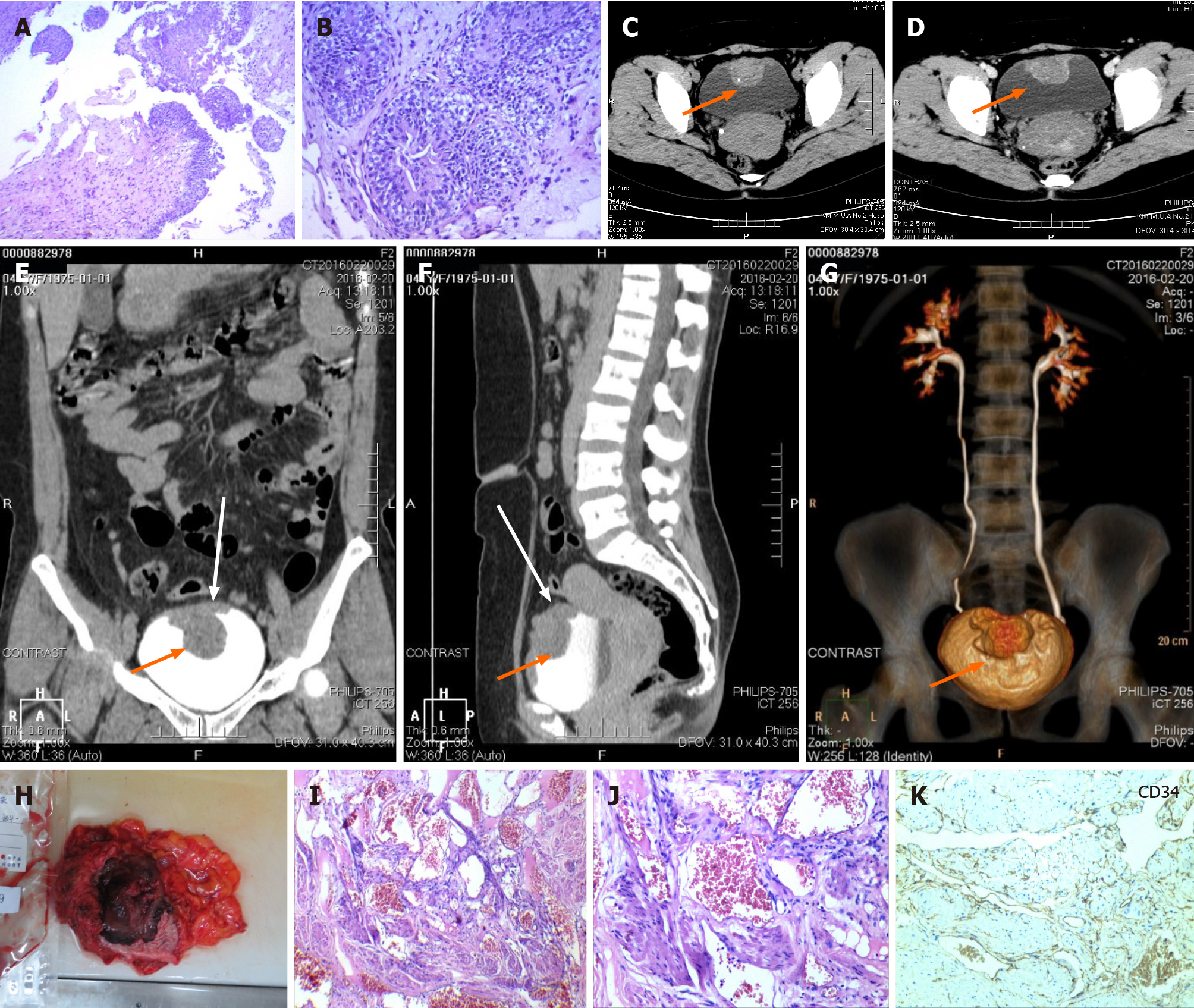Copyright
©The Author(s) 2021.
World J Clin Cases. Jun 6, 2021; 9(16): 3927-3935
Published online Jun 6, 2021. doi: 10.12998/wjcc.v9.i16.3927
Published online Jun 6, 2021. doi: 10.12998/wjcc.v9.i16.3927
Figure 1 Cystoscopy and biopsy, multislice spiral computed tomography urography scanning, and histological and immunohisto
- Citation: Zhao GC, Ke CX. Haemangiomas in the urinary bladder: Two case reports. World J Clin Cases 2021; 9(16): 3927-3935
- URL: https://www.wjgnet.com/2307-8960/full/v9/i16/3927.htm
- DOI: https://dx.doi.org/10.12998/wjcc.v9.i16.3927









